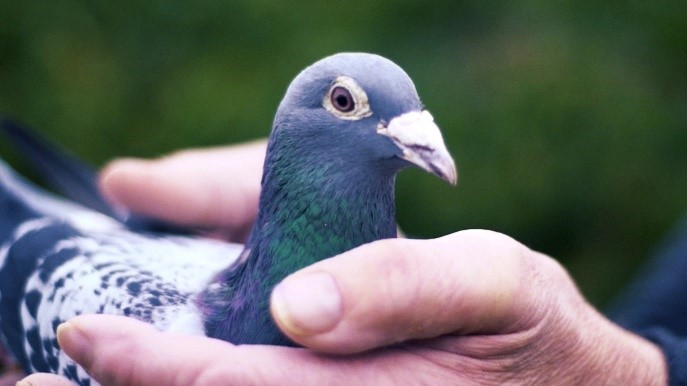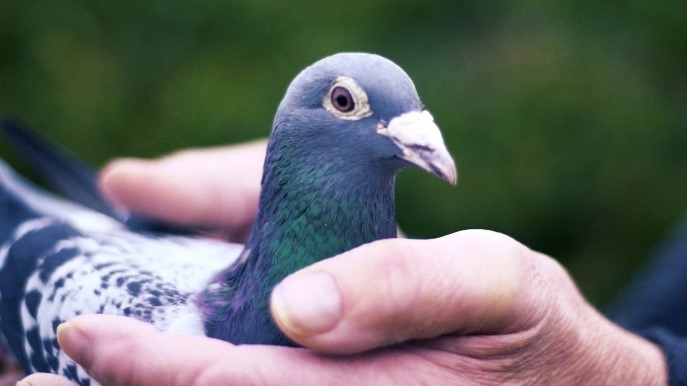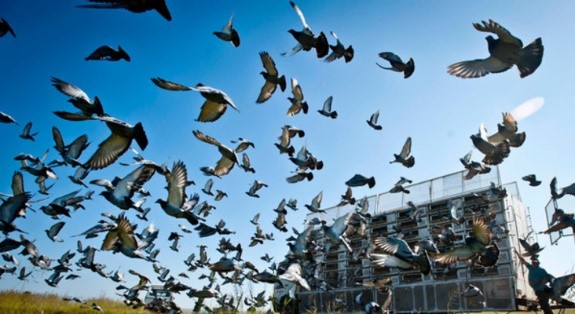
“THE SPORT WITH A SINGLE STARTING LINE AND A THOUSAND FINISH LINES.”
What is pigeon racing?

Pigeon racing is a sport in which specially bred and trained pigeons are released as a group hundreds of miles from their home. After being released, they fly back to their home lofts. The pigeon with the fastest average speed wins the race. Races range in distance from 100 miles to 600 miles, with 200 miles being among the most popular distances.
Is pigeon racing right for me?
Do you enjoy working with animals, appreciate athleticism, and like friendly, wholesome competition? If so, you may find yourself captivated by these amazingly intelligent and athletic birds.You can seek out your own comfort level with the birds. If you desire a lower-key approach, with only a handful of homing pigeons for the family to enjoy, that’s certainly an attractive approach for many. The spectrum also includes those who are deeply committed with a larger racing team.
How do I get started?
You may Contact Us, and we will put you in touch with a local club, as well as a pigeon flyer close by. They will provide information on lofts and obtaining pigeons. When you contact your local club, you’ll find that they will be more than willing to help you get started, as well as answer any questions you may have. While pigeon racing is a competitive sport, most pigeon fanciers are very generous with their time and knowledge.
Do I need a loft in my yard?
Yes, but you can start fairly small and enlarge the loft in time to fit your needs. A loft or coop is where pigeons are housed. It must be dry and well ventilated. The loft can be a 4-foot by 8-foot starter loft that you build yourself or a shed that you buy at a big box store depending on your location and property size. Youngsters will bond to a loft when they are very young and consider it their home. They do not have to be born in the loft to consider it their home.
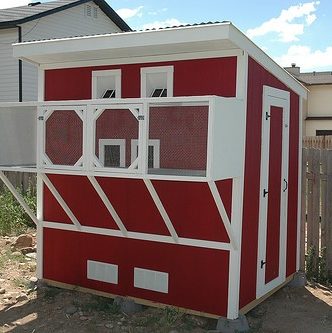
Here is a link to plans for a starter loft: https://drive.google.com/file/d/0B_Xp0Jk-p0iTc0lWS1M4X29nT3c/view
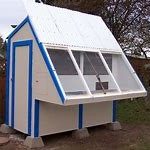
How do I train my pigeons to come home?
Youngsters are usually placed on a landing board before they can do much more than flutter. A “trap” is the place where the pigeons can enter the loft but not go back out. The youngsters learn how to trap or enter the loft and gradually, by increased flying, learn their backyards, neighborhoods, and the general areas surrounding their loft. After four or five months of daily flying around the loft, the youngsters can be taken away from the loft for a short training toss. Some flyers start the first toss at one mile, others at five miles or farther. The youngsters have the homing instinct bred into them and the tossing “activates” the instinct they already have. They are not taught to come home. The birds are taken progressively farther to fine tune their homing instinct so that they return home quickly and to physically condition them to fly the ever-increasing distances. Training usually stops at 50 to 75 miles before the races begin.
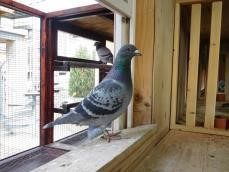
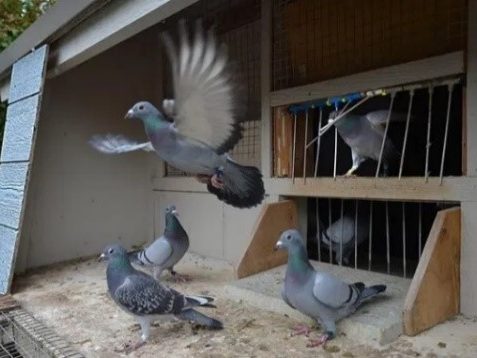
Are pigeons expensive to keep and what do they eat?
There will be an initial outlay for the loft, along with costs for feed, vaccinations and other feeding and watering equipment. However, when compared to hobbies like golf, skiing, fishing, or boating, pigeon racing is relatively inexpensive.
Pigeons are fed a mixture of grains and seeds that can be purchased at your local farmer’s supply or grain store. They also need a small amount of grit, which small pieces of broken rock to help them digest their food.


What is the time commitment?
Like having any pet, pigeons need to be provided food and water daily. Their loft needs to be kept cleaned and they need to be exercised several times a week during racing season. The time commitment is similar to what is required to own a dog. It does take more time as you want to become more competitive.
How does a race actually work?
The race process starts with the pigeons being brought to one of the area clubs where the microchip band around their leg is entered into the race system. They are then placed in specifically designed aluminum race crates, which are then sealed and transported by a specially made ventilated trailer to the designated race location. The pigeons are all released from the trailer at the same time and usually fly together before separating off the flock to fly to their own lofts. When they arrive home, they must enter the loft and be registered by the loft computer. It is not the first bird home that wins the race, but the bird with the fastest average speed. The loft computer is then brought back to the club for the information to be downloaded. By taking the flying time and distance flown, the speed in yards per minute is calculated and the fastest speed wins the race. As stated above, it’s “THE SPORT WITH A SINGLE STARTING LINE AND A THOUSAND FINISH LINES.”


How long does a pigeon race take?
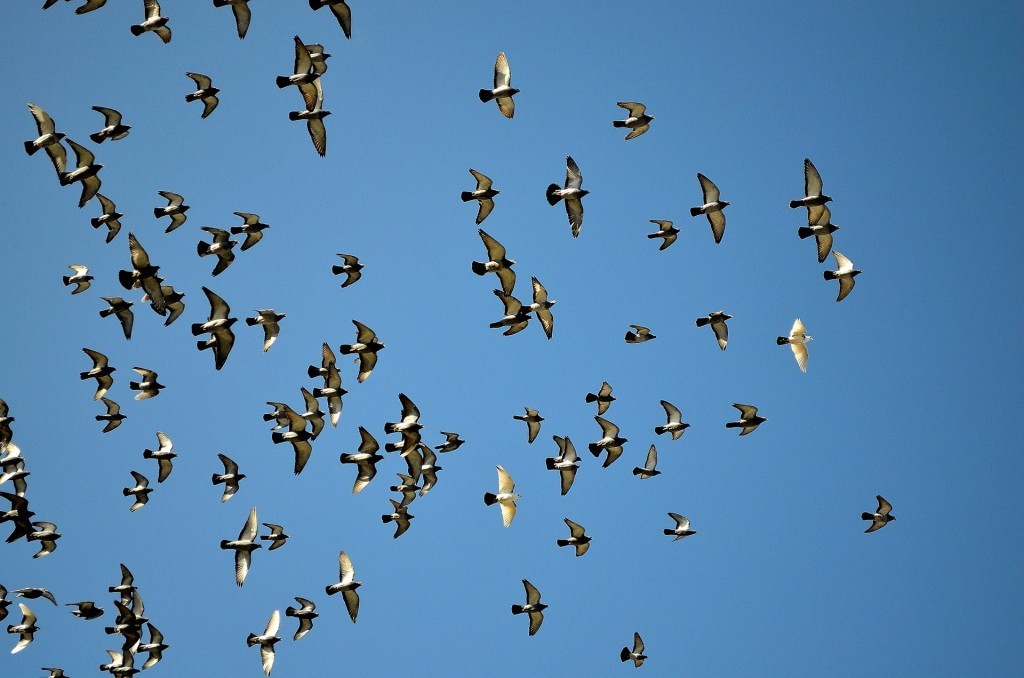
The speed of any particular pigeon race is most dependent on the speed and direction of the wind. With little wind, a racing pigeon flies about 45 mph, but with a tail wind they can reach speeds over 65 mph. In the Boston area, our 400-mile race release location is Buffalo, NY near the stadium for the Bills. If the pigeons are released at 7 am, with a slight tailwind, they should start arriving home at about 3 pm in the afternoon.
Are racing pigeons the same as the wild pigeons that we see in parks and under highway bridges?

They are effectively the same species of bird, but racing pigeons are a world away from their wild brethren. Racing pigeons have been selectively bred by humans to emphasize stamina, speed and strength, and also homing instinct. Racing pigeons are sometimes called ‘The athletes of the air’ and you can see they are much slimmer and sleeker looking than a wild or feral pigeon. If in any doubt, a racing pigeon will have a ring on its leg. It’s not possible to take a feral pigeon and train it to be a racing pigeon.
Is pigeon racing cruel?
No, the welfare of the birds is of paramount importance to pigeon fanciers. An unhappy pigeon will not fly well. Pigeon fanciers are extremely fond of their birds, becoming very attached to them. They care for them, keep them comfortable, fed and watered and do everything in their power to keep them healthy. Pigeons like to be around people, react well to being gently handled, and will happily settle in a fancier’s hand. Fanciers treat their birds as pampered pets, and many pigeons can recognize their owners. The pigeons enjoy exercise and will happily fly long distances. Long flights and the homing instinct that forms the basis of the sport are natural features of pigeon physiology, not something that is forced on them. The National governing bodies take the welfare of the birds very seriously and will expel and report any fanciers found to be mistreating their birds.
